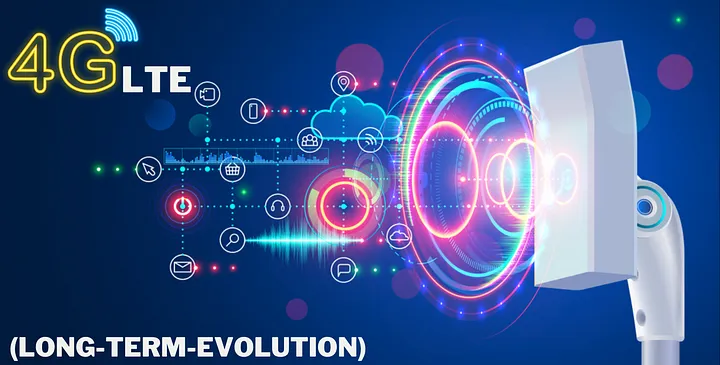In this series of articles, we embark on a journey to explore the transformative power of telemedicine in the realm of healthcare. Telemedicine has emerged as a vital tool that harnesses the potential of advanced connectivity to revolutionize the way medical services are delivered and accessed. Before diving into the technical intricacies, it is essential to establish a foundation of knowledge and address some fundamental questions surrounding this topic.
- What is Telemedicine in the context of Healthcare?
Telemedicine refers to the practice of delivering healthcare services remotely, leveraging telecommunications technology. It encompasses a wide range of applications, including virtual consultations, remote monitoring, teleconferencing, and more. By bridging geographical distances and overcoming physical barriers, telemedicine has the potential to enhance healthcare accessibility, improve patient outcomes, and streamline medical workflows.
- How does Telemedicine apply to Local LTE?
Local LTE, or local Long-Term Evolution, plays a pivotal role in enabling telemedicine within healthcare settings. This wireless communication technology provides high-speed data connectivity over a local area, empowering healthcare providers with reliable and secure networks for transmitting medical data. Local LTE networks are designed to handle the demanding requirements of telemedicine, such as real-time video consultations, remote diagnostics, and data-intensive applications.
- What roles does Local LTE play in Telemedicine in Healthcare?
Local LTE serves as the backbone of telemedicine infrastructure, facilitating seamless communication between healthcare professionals, patients, and medical devices. It enables the transmission of high-resolution medical images, vital signs data, electronic health records, and other critical information, fostering efficient collaboration and enabling remote healthcare delivery. Local LTE networks also ensure low-latency connections, ensuring real-time interactions and reducing potential disruptions.
- What are the use cases of Telemedicine in Healthcare?
Telemedicine has numerous applications across various healthcare domains. Some notable use cases include virtual consultations, where patients can connect with healthcare providers remotely, eliminating the need for in-person visits. Remote patient monitoring allows healthcare professionals to track vital signs, manage chronic conditions, and ensure proactive care from a distance. Telemedicine also plays a vital role in telestroke programs, remote diagnostics, and medical education, among others.
- What is the mechanism behind Telemedicine, and why is it necessary?
Telemedicine relies on a combination of telecommunications infrastructure, secure data transmission protocols, and specialized software applications. The mechanism involves leveraging local LTE networks to establish reliable connections, enabling healthcare providers to remotely access patient data, conduct consultations, and collaborate with other professionals. Telemedicine is necessary to bridge geographical barriers, improve healthcare access in remote areas, and optimize resource utilization, ultimately benefiting both patients and healthcare providers.
- What are the benefits of utilizing Local LTE in Telemedicine?
Local LTE offers several advantages that make it an ideal technology for telemedicine. These include high data transfer speeds, low latency, and the ability to support large volumes of data transmission. These benefits ensure real-time, uninterrupted communication between healthcare professionals and patients, enabling accurate diagnoses, prompt treatment decisions, and efficient collaboration.
- How does Local LTE help in ensuring secure and reliable data transmission?
Local LTE networks incorporate robust security measures, such as encryption protocols, authentication mechanisms, and secure virtual private networks (VPNs). These measures help safeguard patient data, ensuring compliance with privacy regulations and protecting sensitive information from unauthorized access. Moreover, Local LTE networks provide reliable connectivity, minimizing the risk of data loss or interruptions during critical telemedicine sessions.
- Can Local LTE support the bandwidth requirements of telemedicine applications?
Yes, Local LTE is designed to handle the bandwidth-intensive demands of telemedicine applications. Whether it’s high-definition video consultations, real-time transmission of medical images, or continuous remote patient monitoring, Local LTE networks offer the necessary bandwidth and capacity to support these data-intensive operations. This ensures that healthcare providers can deliver and receive accurate and timely information for optimal patient care.
- How does Local LTE enhance healthcare accessibility in remote areas?
Local LTE brings advanced connectivity to even the most remote healthcare facilities, overcoming geographical barriers and expanding access to specialized medical services. By establishing local LTE networks, healthcare providers can extend telemedicine capabilities to underserved regions, enabling patients in rural or isolated areas to receive expert care without the need for long-distance travel. This is particularly beneficial for individuals with limited mobility or those residing in areas with a scarcity of healthcare resources.
- Can Local LTE networks integrate with existing healthcare infrastructure?
Yes, Local LTE networks can seamlessly integrate with existing healthcare infrastructure, including electronic health record (EHR) systems, medical devices, and clinical workflows. This integration enables the smooth transfer of patient data, promotes interoperability between different healthcare systems, and facilitates collaborative decision-making among multidisciplinary teams. Local LTE acts as a reliable backbone, ensuring the efficient exchange of information between various components of the healthcare ecosystem.
By harnessing the capabilities of Local LTE, telemedicine opens up a world of possibilities for improving healthcare delivery. Its ability to provide secure and reliable connectivity, support bandwidth-intensive applications, and extend healthcare access to remote areas makes it an indispensable technology in the modern healthcare landscape. In the upcoming articles, we will delve deeper into the technical aspects of implementing Local LTE networks for telemedicine, exploring the infrastructure requirements, deployment considerations, and potential challenges. Stay tuned as we unravel the intricacies of this fascinating field!




